Art, Craft & Design
Head of Department: Mrs K Baptist – kb@barneyschool.org.uk
Teacher of Art: Mrs S L Rothwell
Introduction
The first part of the two-year course concentrates on the improvement of technical and drawing skills, the introduction of new media and techniques and the gaining of more experience in the area of independent research and investigation. The qualification is made up of two components: the Portfolio comprises practical work, which explores the skills, knowledge and understanding in the learner’s chosen practical area(s) of study; the Externally Set Task Offers learners the opportunity to respond to a choice of themes, written and visual starting points and stimuli.
In Art, Craft and Design, learners must work in two or more areas from the list below, within and/or across titles:
Fine Art: areas of study such as drawing, painting, printmaking or sculpture;
Graphic Communication: areas of study such as illustration, packaging or advertising;
Photography: areas of study such as location or studio, the moving image;
Textile Design: areas of study such as printed and digital textiles, fashion design or stitched and/or embellished textiles;
Three-Dimensional Design: areas of study such as ceramics, product design or jewellery;
Critical and Contextual Studies: areas of study such as artistic movements, popular culture, natural forms.
Course/Exam board: OCR GCSE J170
Specification
Learners are required to demonstrate the knowledge and understanding listed below through practical application of skills to realise personal intentions relevant to their chosen titles and area(s) of Art, Craft and Design. Learners are required to know and understand how sources inspire the development of their ideas. Reference should be made to the following:
• The work and approaches of artists, craftspeople or designers from contemporary and/or historical contexts, periods, societies and cultures;
• Contemporary and/or historical environments, situations or issues;
• Other relevant sources researched by the learner in the chosen specification title and area(s) of study from art, craft and design;
• The ways in which meanings, ideas and intentions can be communicated through visual, sensory and tactile language, using formal elements, including colour, line, form, tone and texture;
• The characteristics, properties and effects of using different media, materials, techniques and processes, and the ways in which they can be used in relation to learners’ own creative intentions and chosen area(s) of study in art, craft and design;
• The different purposes, intentions and functions of art, craft and design in a variety of contexts and as appropriate to learners’ work.
Assessment
Component 1 – Portfolio: 45 hours, 60% of the overall grade.
A portfolio of practical work showing the student’s personal response to either a centre or learner set starting point, brief, scenario or stimulus.
Component 2 – Externally Set Task, 10 hours, 40% of the overall grade.
The paper is issued in January each year and provides learners with five themes, each with a range of written and visual starting points and stimuli. A response should be based on one of these options.
Candidates will be expected to demonstrate a response to all the assessment requirements, listed below, in both components of the course.
AO1 Develop ideas through investigations, demonstrating critical understanding of sources.
AO2 Refine work by exploring ideas, selecting and experimenting with appropriate media, materials, techniques and processes.
AO3 Record ideas, observations and insights relevant to intentions as work progresses.
AO4 Present a personal and meaningful response that realises intentions and demonstrates understanding of visual language.
Each of these comprises 20% of the overall mark of each component.
What Art, Craft & Design can do for you
The study of art and design helps students engage more deeply with the world around them and opens them up to new ways of seeing. The visual-spatial skills which are encouraged are becoming increasingly essential in today’s technological world. Pupils work closely with a variety of media, materials and techniques, traditional and new technologies. These problem-solving exercises help develop higher order thinking skills such as critical, reflective and imaginative thinking, and increases awareness of different roles, functions, audiences and consumers of art and design practice.

